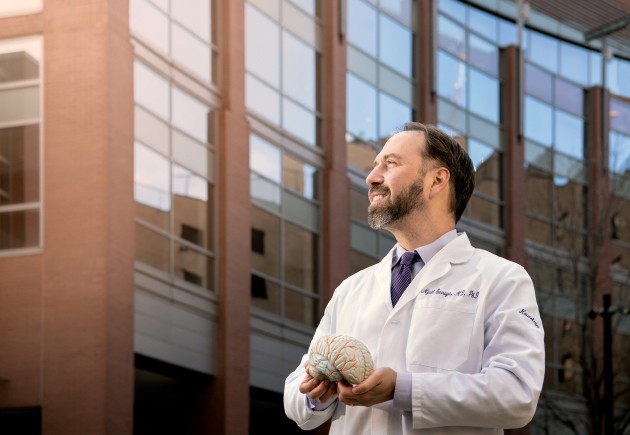What is neurorestoration?
The brain is the command center of the human body—controlling and coordinating every action, reaction, thought, memory, feeling, and function. Neurorestoration focuses on restoring, promoting, or maintaining the integrity of neurological functions by neurorestorative strategies, including physical (electronic or magnetic), chemical (medicine or factors), biological (cell therapy, molecule, bioengineering, and tissue engineering), technological (wearables, implantables, and assistive devices), surgical, and other interventions focused on the brain.
Why does it matter?
Neurorestoration holds the promise and potential to provide patients affected by life-altering neurological conditions with the independence, function, and higher quality of life that they deserve. By leveraging advances in brain-computer interfaces (BCIs), wearables, implantable technologies, artificial intelligence (AI), stem cells, rehabilitation medicine, neurosurgery, and outcome measurements, we can develop new treatments to make this possible.
Why here, why now?
In Philadelphia, the stroke rate is 20 times the national average. That means approximately 60,000 of the 785,000 cases of stroke reported nationally happen in Philadelphia. Pennsylvania is also home to one of the nation’s oldest populations, who are at the highest risk for fall-related traumatic brain and spinal cord injuries as well as neurodegenerative diseases like dementia, peripheral neuropathy, and ALS.
While conditions like these are considered irreversible, great strides and promising advances have been made in neurorestoration, particularly in the BCI field. Rapid advances in smart devices, wearable and implantable technologies, AI, and medtech are creating unprecedented opportunities for individuals to overcome the functional limitations caused by a neurological condition and to have greater control of the world around them.
As a result of this positive momentum, we have now reached a stage where the research breakthroughs of the past 20 years can be translated into real- world solutions for these patient populations, and many more.
The Raphael Center for Neurorestoration is doing just that.



